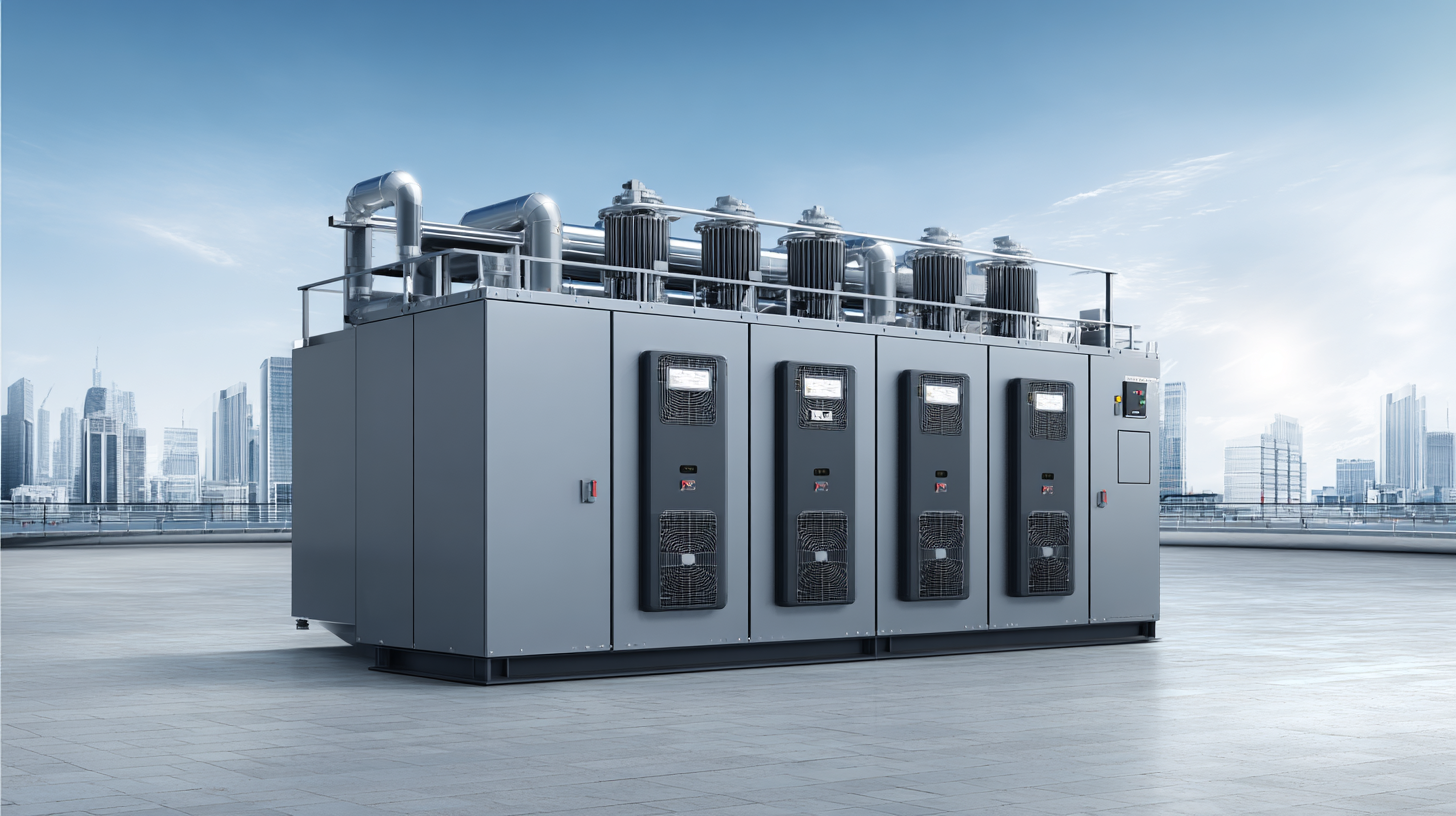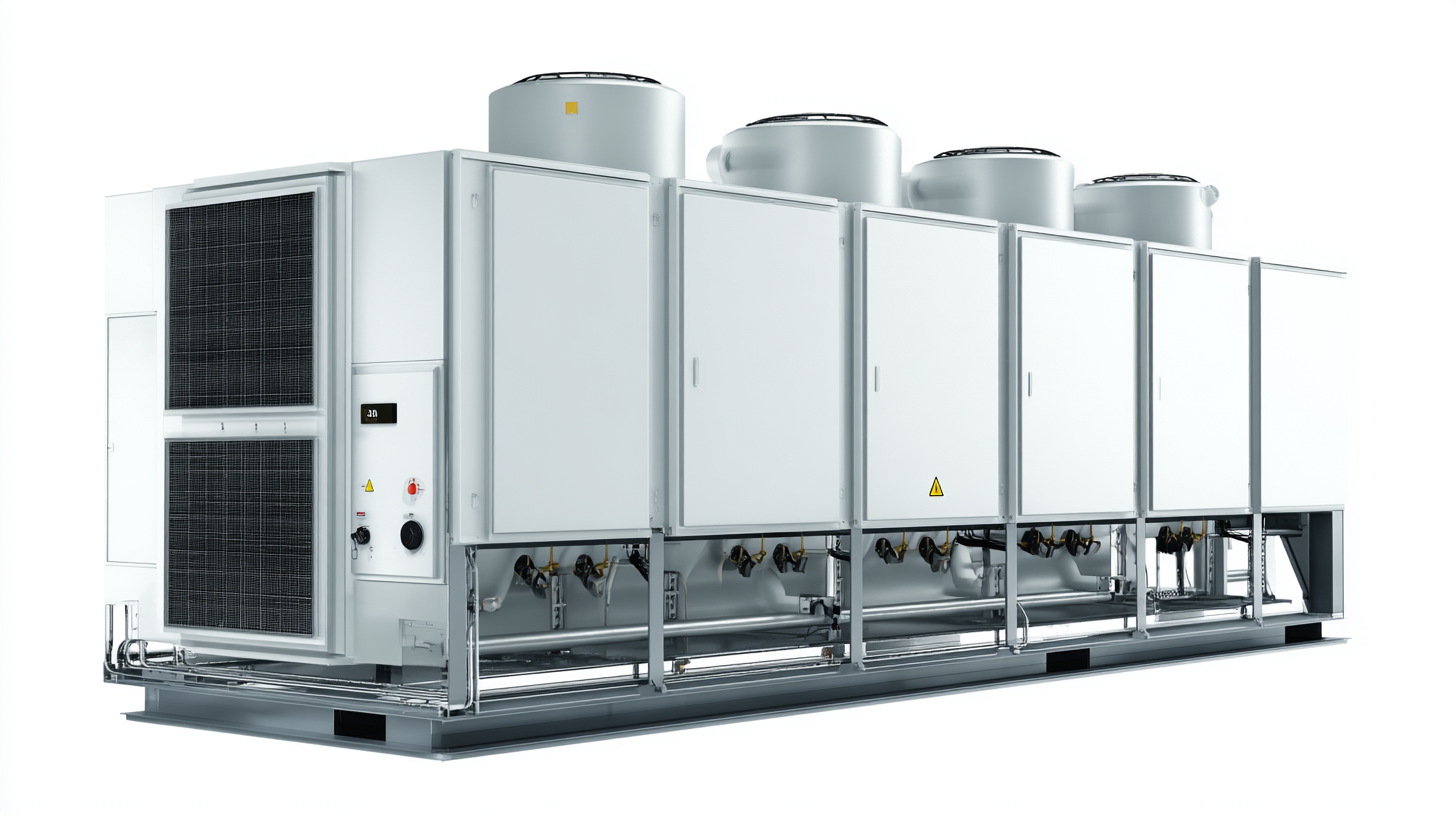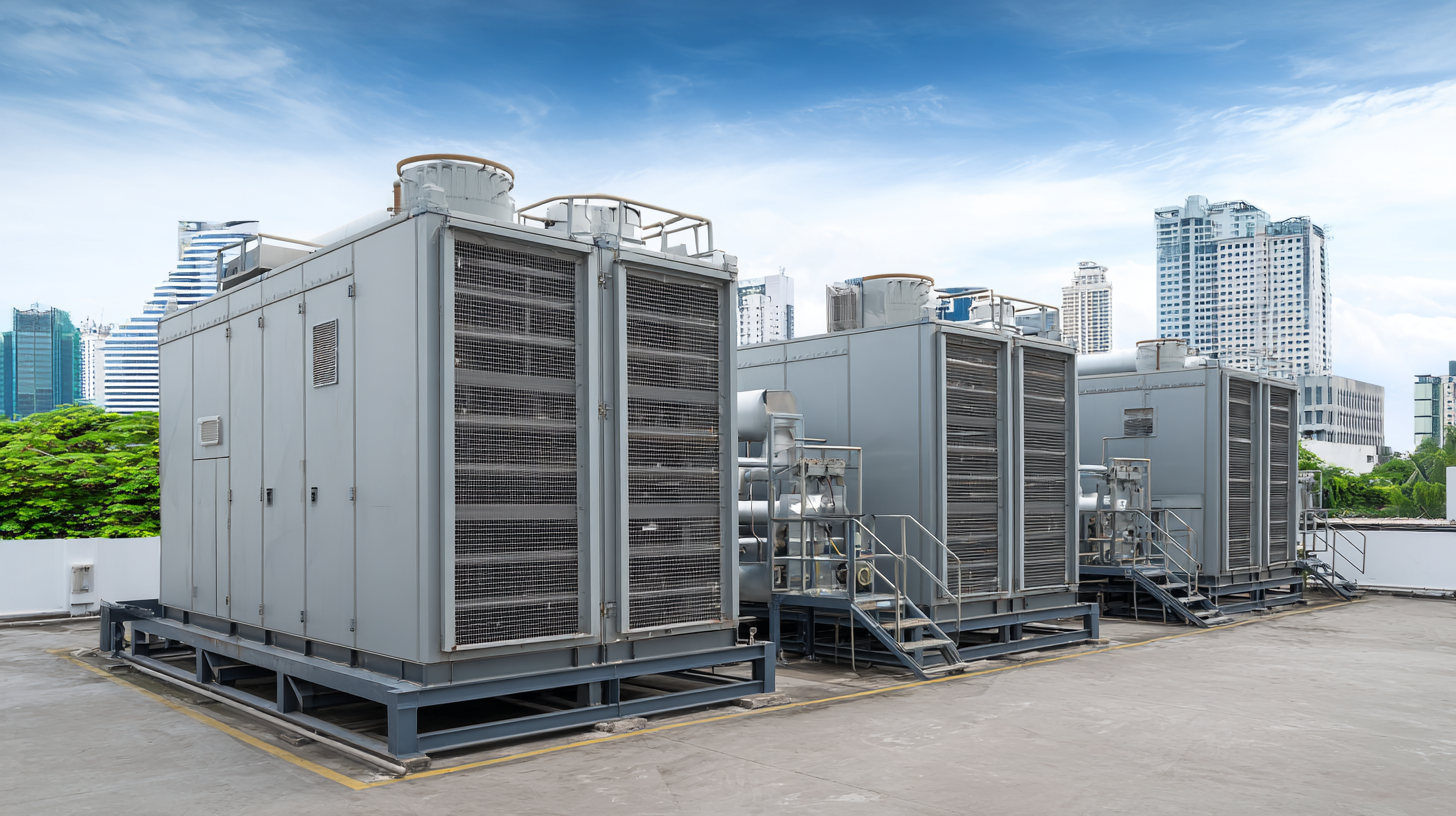- About
- Welders
- - Automation
- - Bench Welders
- - Capacitor Discharge Welders
- - Custom Resistance Welders
- - Diffusion Welding
- - Metal Door and Frame Welders
- - MFDC Welding
- - Multi-Gun Welders
- - Press Type Welders
- - Rocker Arm Spot Welders
- - Seam Welders
- - Spot Welding Guns
- - Turntable Welders
- - Used Welders and Equipment
- - XY Welders
- Blog
- TECNA
- Fastener Welding
- Supplies
- Services
- Resources
- Contact
Maximizing Energy Efficiency: The Ultimate Guide to Air Cooled Chillers for Your Business
In today's competitive business landscape, energy efficiency has become a critical factor in operational success and sustainability. One of the most effective ways to enhance your company's energy performance is through the implementation of air cooled chillers. These systems not only provide effective cooling solutions but also contribute significantly to reducing energy consumption and operational costs.

In this ultimate guide, we will explore various strategies for maximizing energy efficiency with air cooled chillers, offering insights into the latest technologies, best practices, and maintenance tips. Whether you are considering installing a new system or optimizing an existing one, understanding how to leverage air cooled chillers can lead to substantial energy savings and a greener footprint for your business. Join us as we delve into the essential steps and expert advice that will empower you to make informed decisions for your cooling needs.
Understanding the Basics of Air Cooled Chillers and Their Benefits for Businesses
 Air cooled chillers have become a fundamental component in enhancing energy efficiency for businesses, especially as digital demand grows. These systems work by utilizing ambient air to dissipate heat, making them a viable choice for various industrial applications. According to industry reports, air-cooled chillers can be up to 30% more energy-efficient compared to traditional cooling methods, significantly reducing operational costs for businesses.
Air cooled chillers have become a fundamental component in enhancing energy efficiency for businesses, especially as digital demand grows. These systems work by utilizing ambient air to dissipate heat, making them a viable choice for various industrial applications. According to industry reports, air-cooled chillers can be up to 30% more energy-efficient compared to traditional cooling methods, significantly reducing operational costs for businesses.
As data centers expand globally, the need for efficient cooling solutions is more critical than ever. Leading data center operators have begun reverting to air-cooled chillers as they reassess their cooling strategies. Reports indicate that air-cooled systems can offer substantial energy savings and require less water compared to water-cooled systems, aligning well with sustainable practices. With data centers consuming nearly 2% of the world's total electricity, optimizing cooling through these chillers plays a vital role in reducing their environmental footprint while ensuring efficient operations. In essence, embracing air-cooled chillers not only supports energy efficiency but also contributes to the overall sustainability of business operations.
Key Factors to Consider When Choosing the Right Air Cooled Chiller for Your Needs
When selecting the right air cooled chiller for your business, there are several key factors to consider to ensure energy efficiency and optimal performance. First, size and footprint are critical; the chiller must fit your available space while providing the required cooling capacity. A compact design can facilitate installation and scalability, allowing for future expansion as your business grows.
Another important consideration is load demand forecasting. Accurate predictions of cooling needs can enhance the efficiency of your system, reducing energy consumption and operational costs. Emerging technologies in this area, such as neural networks, can offer innovative solutions for anticipating cooling requirements.
Additionally, it's essential to evaluate the type of chiller—whether electric or engine-driven—as each option has its advantages and may be more suited to specific applications. Making informed choices based on these factors will not only optimize energy efficiency but also contribute to long-term sustainability for your operations.
Strategies for Maximizing the Energy Efficiency of Your Air Cooled Chiller
Air-cooled chillers play a crucial role in energy efficiency, especially in data centers where thermal management is paramount. Recent advancements in cooling technologies have demonstrated significant improvements in energy usage. For instance, the integration of free cooling systems has been shown to achieve zero water consumption while maximizing efficiency, particularly in AI infrastructure. According to industry reports, effective thermal management solutions can reduce energy consumption by up to 30%, highlighting the importance of adopting innovative cooling strategies.
Moreover, as organizations increasingly recognize cooling as a strategic design consideration, optimizing the performance of air-cooled chillers becomes essential. Implementing adiabatic pre-cooling systems can significantly enhance the efficiency of these chillers in hot and humid climates, with studies indicating that such integrations can improve energy performance drastically. As the energy demands of data centers continue to rise, exploring these next-generation cooling solutions is vital for businesses aiming to minimize their operational costs and carbon footprint while ensuring reliable performance.
Energy Efficiency of Air Cooled Chillers
Regular Maintenance Tips to Ensure Optimal Performance of Air Cooled Chillers
Regular maintenance is crucial for ensuring the optimal performance of air cooled chillers, as these systems play a vital role in maintaining energy efficiency in commercial settings. One of the most important tasks is to routinely check and clean the condenser coils. Dust and debris can accumulate over time, hindering heat transfer and causing the system to work harder, which in turn increases energy consumption. Cleaning the coils at least twice a year not only improves efficiency but also extends the lifespan of the unit.
Additionally, monitoring refrigerant levels is essential for maintaining system performance. Low refrigerant levels can indicate leaks and lead to reduced cooling efficiency. Regular inspections should include checking for any signs of leakage and ensuring that the refrigerant charge is at the manufacturer's specifications. Moreover, it's beneficial to test and calibrate controls periodically to ensure that the chillers operate under optimal conditions. By implementing these maintenance tips, businesses can achieve improved performance, prolong equipment life, and significantly reduce operational costs associated with air cooled chillers.
Maximizing Energy Efficiency: The Ultimate Guide to Air Cooled Chillers for Your Business
| Maintenance Task | Frequency | Estimated Time (Hours) | Potential Efficiency Gains (%) | Cost Estimate ($) |
|---|---|---|---|---|
| Clean Condenser Coils | Monthly | 2 | 10 | 150 |
| Check Refrigerant Levels | Quarterly | 1 | 5 | 75 |
| Inspect Electrical Connections | Bi-Annually | 3 | 7 | 120 |
| Replace or Clean Air Filters | Monthly | 0.5 | 8 | 50 |
| Perform System Efficiency Audit | Annually | 5 | 15 | 250 |
Cost-Benefit Analysis: Evaluating the Long-Term Savings of Energy Efficient Chillers
The long-term savings potential of energy-efficient chillers contrasts sharply with conventional cooling solutions, especially when conducting a cost-benefit analysis. Businesses transitioning to air-cooled chillers can expect substantial reductions in energy consumption, which translates directly into lower utility bills. As the global residential district cooling market is projected to expand significantly, reaching $10.33 billion by 2032, the adoption of these efficient systems becomes increasingly attractive.

Moreover, hybrid cooling approaches present a unique cost advantage, offering a middle ground between full liquid cooling systems and traditional methods. Companies can enjoy immediate cost reductions while still benefiting from improved energy performance. Data collection plays a pivotal role in this transition, enabling organizations to track energy consumption trends and identify further opportunities for savings. Insights gained from smart building platforms underline the importance of integrated solutions in driving efficiency and maximizing return on investment.
Related Posts
-

How to Optimize Your Industrial Processes with a Recirculating Water Chiller
-

Innovative Chillers Revolutionizing Temperature Control in Modern Industries
-

Exploring the Future of Industrial Chillers at the 138th Canton Fair 2025: Trends and Innovations
-

The Future of Manufacturing: How Spot Welders Revolutionize Metal Joining Techniques
-

Understanding the Benefits of Using a Portable Water Chiller for Your Outdoor Adventures
-

How to Select the Right Industrial Chiller for Your Business Needs
